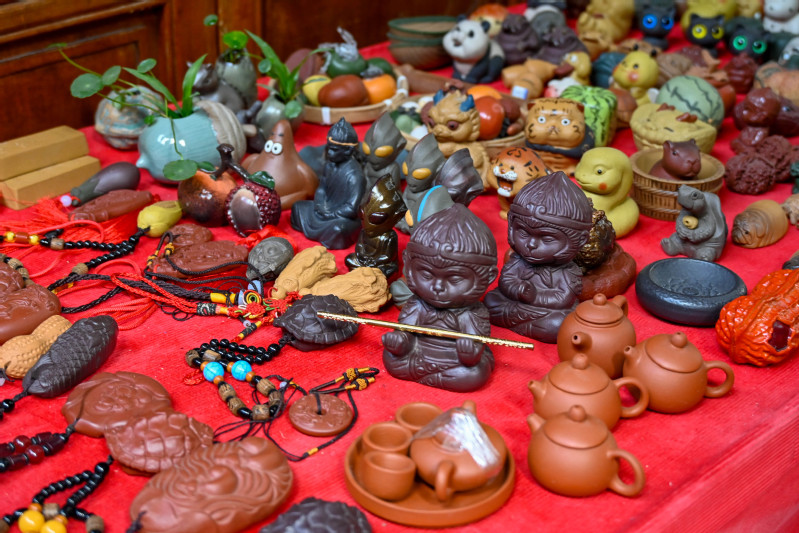A fantastic bronze mirror exhibition is staged at the Museum of Fudan University until this September.
Since 1977, people around the world celebrate on every International Museum Day (May 18) the role of museums in spreading knowledge by bringing people and exhibits closer.
Bronze mirrors, as one of the important Chinese relics categories, have always been valued by researchers and collectors for their unique features.
Feel like going to a museum? Look no further.
The Museum of Fudan University has recently received from Collector Wang Ganghuai 118 pieces of exquisite bronze mirrors of different Chinese dynasties.
As these mirrors are now on display at the Museum, let’s catch a glimpse of these treasures.
Mirror with Panchi Dragons and Pheonixes
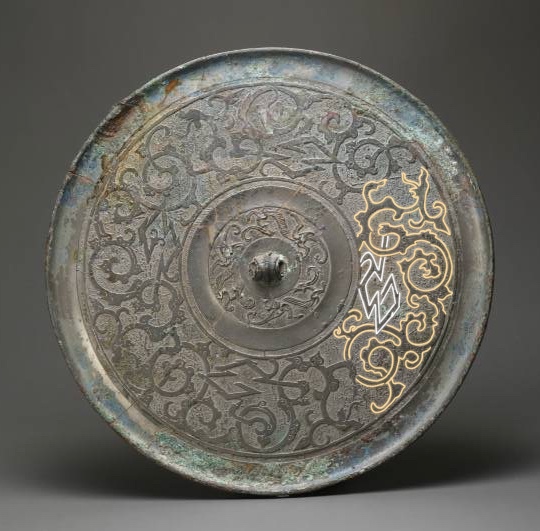

Dynasty: Warring States period (770 - 476 BC)
As a mythical image in Chinese culture, dragon was worshiped by ancient Chinese. On this mirror, four dragons flying heroically in a lightning storm were inscribed.
Mirror with Grass Leaf Motifs and Inscription
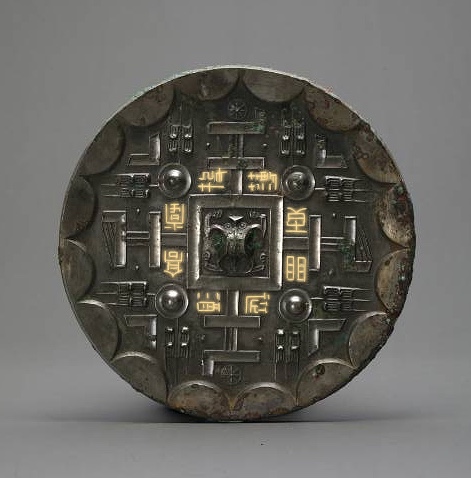
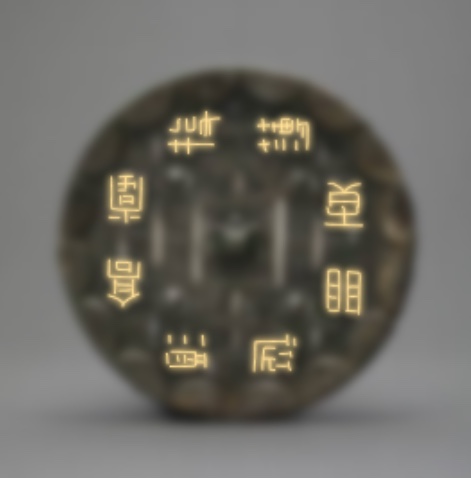
Dynasty: Western Han Dynasty (206 BC - 24 AD)
On this mirror, the eight-character couplet “从酒高堂,投博至明” means drinking and playing games. The inscription depicts a joyful scene of how the ancient Chinese entertain themselves. “投” and “博” were two popular games. “投” refers to “投壶” (literally translated to pitch-pot, meaning throwing sticks from a set distance into a canister). “博” refers to “博戏” (literally translated to betting games. Dice, mahjong and poker, for example, are betting games).
Mirror with Linked Arcs, Dragons and Four Nipples
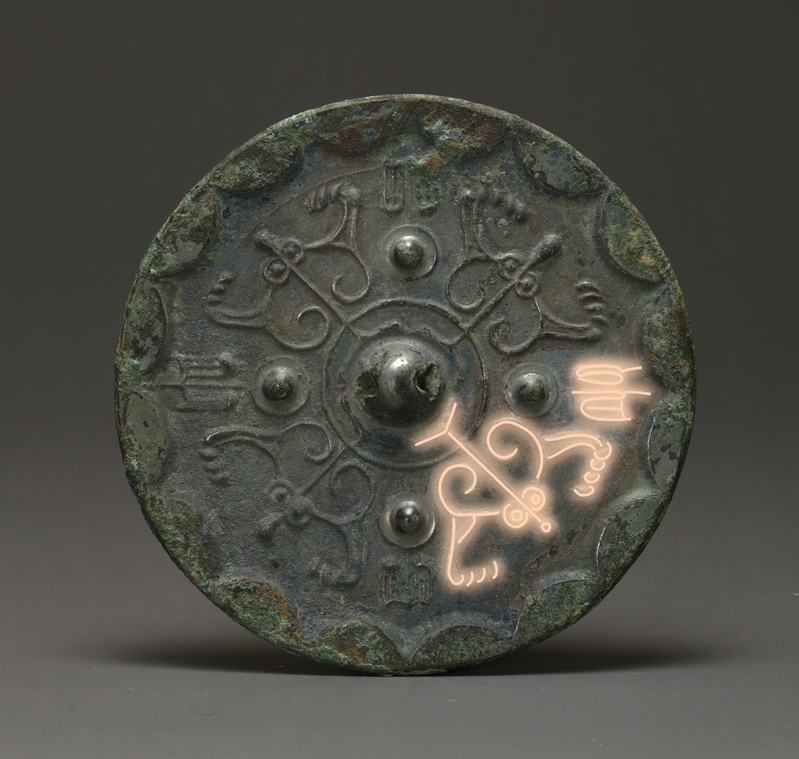
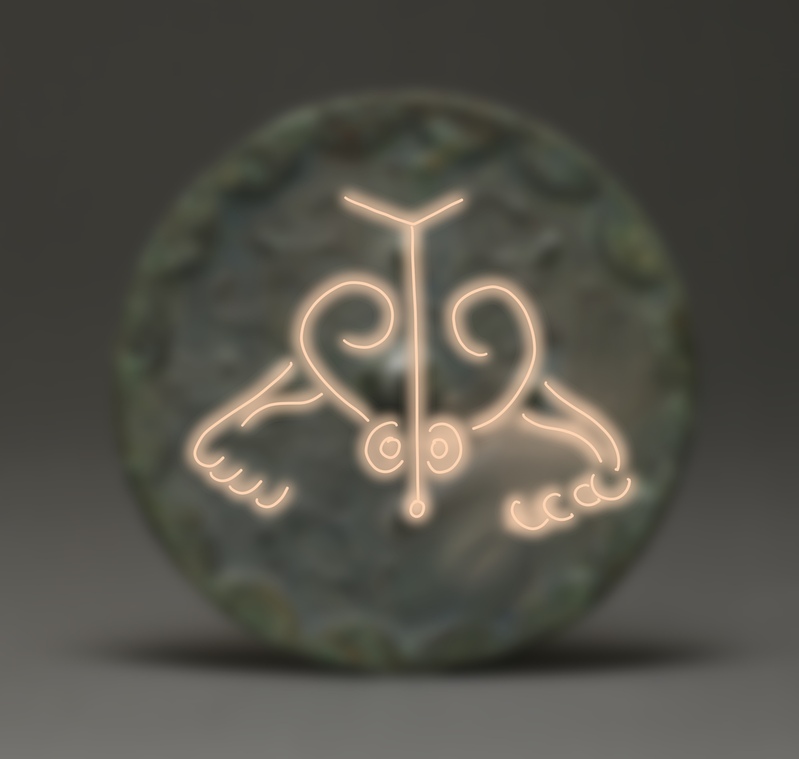
Dynasty: Western Han Dynasty (206 BC - 24 AD)
The depiction of dragon at this time has become more abstract. On this mirror, four dragons face toward the rim of the mirror with their claws open.
Mirror with Imaginary Beasts and Inscription
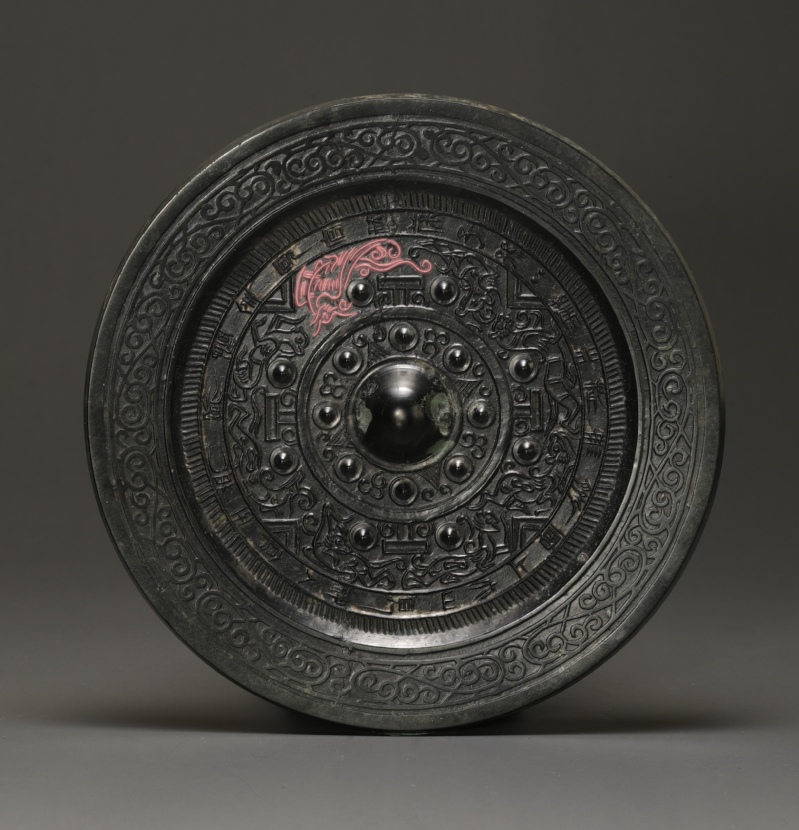

Dynasty: Between Xin Dynasty (9 - 23 AD) and early Eastern Han Dynasty (25 - 220 AD)
This mirror is engraved with the four symbols of the Chinese constellations: “青龙”(Azure Dragon), “白虎”(White Tiger), “朱雀”(Vermilion Bird) and “玄武”(Xuanwu, a mythical creature which looks like a tortoise). The complicated design full of sags and crests is a typical mirror style of Xin Dynasty.
Mirror with Mythical Creatures and Advertising Inscription
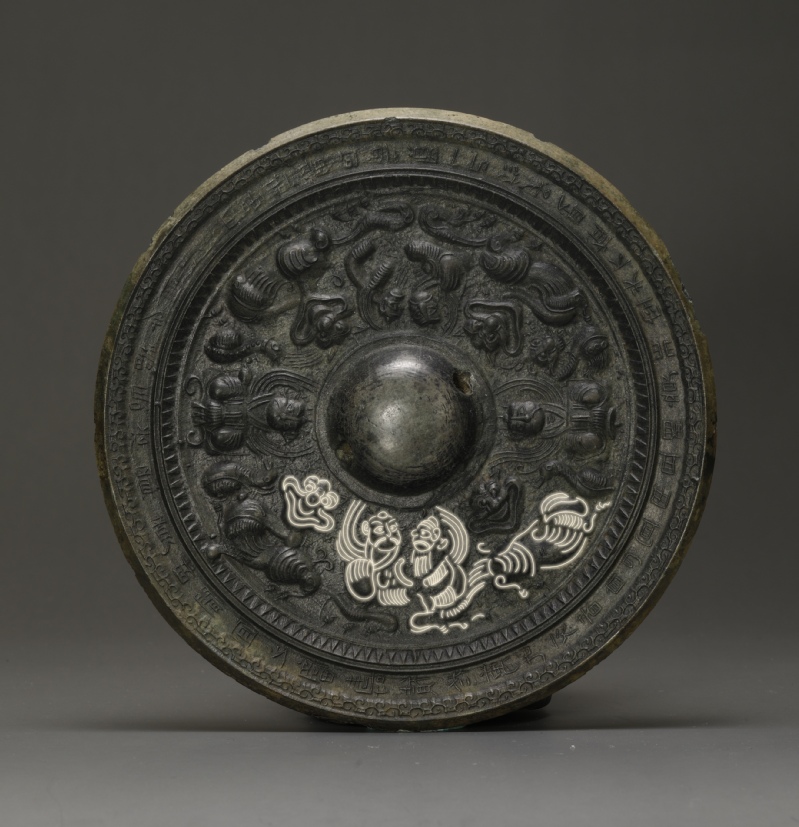
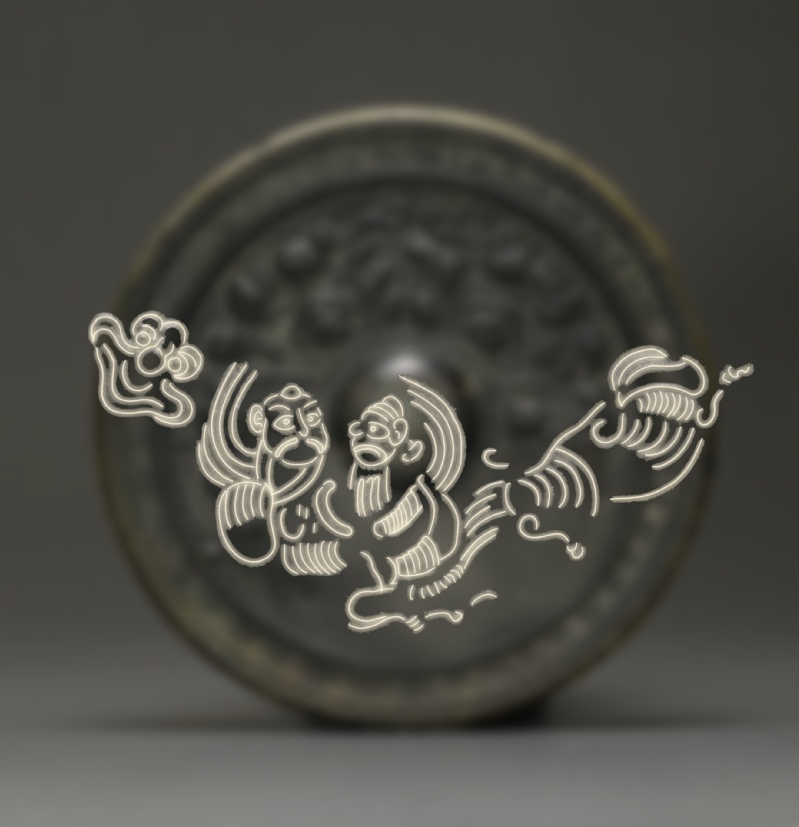
Dynasty: Between Eastern Han Dynasty (25 - 220 AD) and the Three Kingdoms (220-280 AD)
At this time, the images of legendary creatures infused with artisans’ wild imaginations were frequently employed on bronze mirrors produced in “江南”(Jiangnan, which usually refers to the geographical area in the south of the Yangtze River) during this period. Here you can see a laughing monster face with its mouth wide open.
Mirror with Lions, Grapes and Inscription
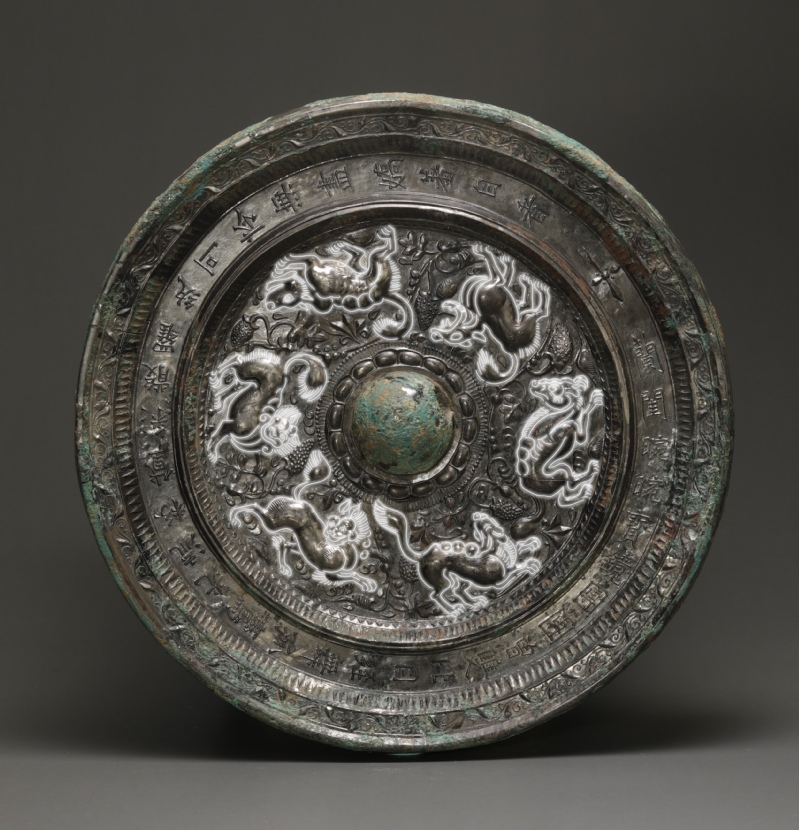
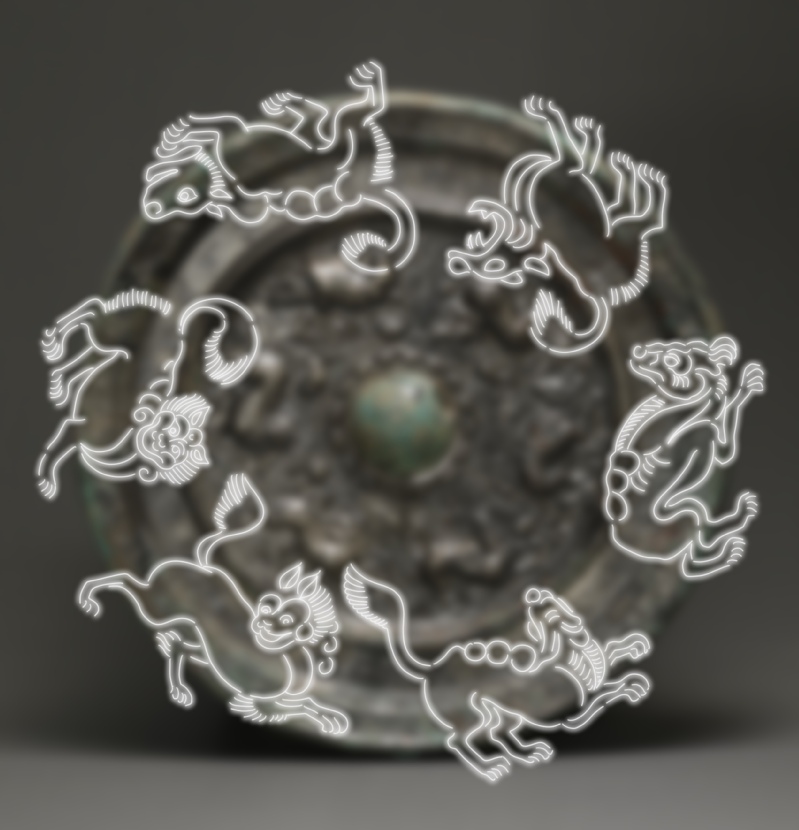
Dynasty: Late Sui Dynasty (581 - 619 AD)
This mirror is one of the most valuable pieces of the 118 artifacts at the exhibition. The six lions and six bunches of grapes on the inner ring were introduced to China from the West, denoting the communication between the East and the West in ancient times.
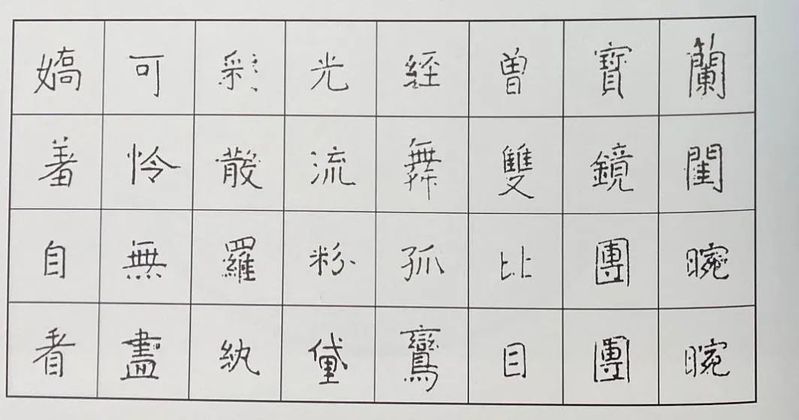
On the mid ring is engraved with a 32-character poem.
兰闺婉婉,
宝镜团团,
曾双闭目,
经舞孤鸾,
光流粉黛,
彩散罗纨,
可怜无尽,
娇羞自看。
The poem describes a lady waiting for the return of her husband. She dressed herself up well and put on makeups. She looked into the mirror and found nobody by her side to appreciate her beauty. It is a common theme for mirror decoration at the time, and you can see more mirrors of such theme at the exhibition.
Mirror with Immortal and Crane
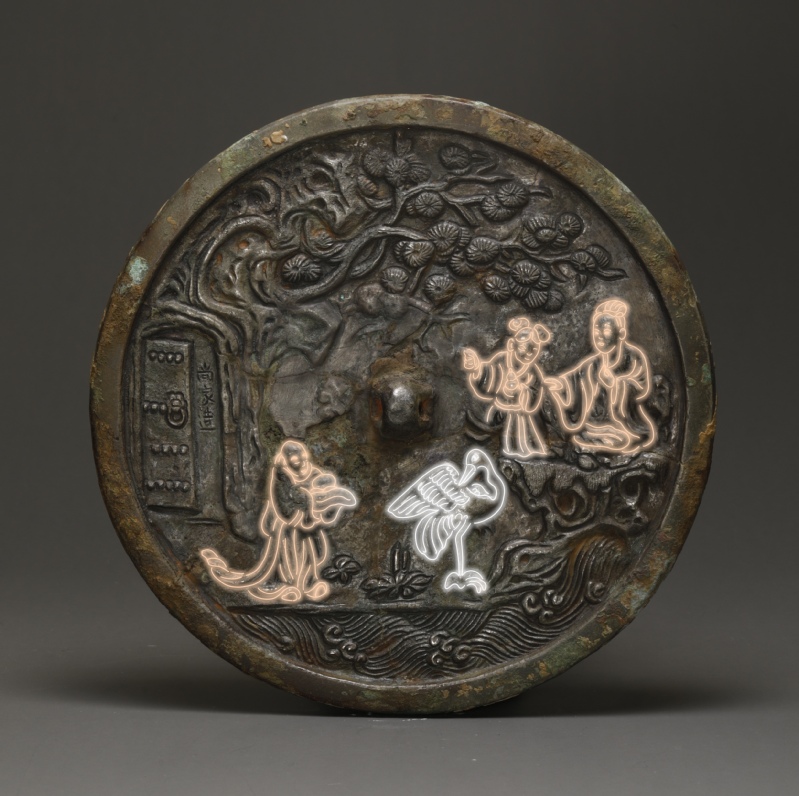
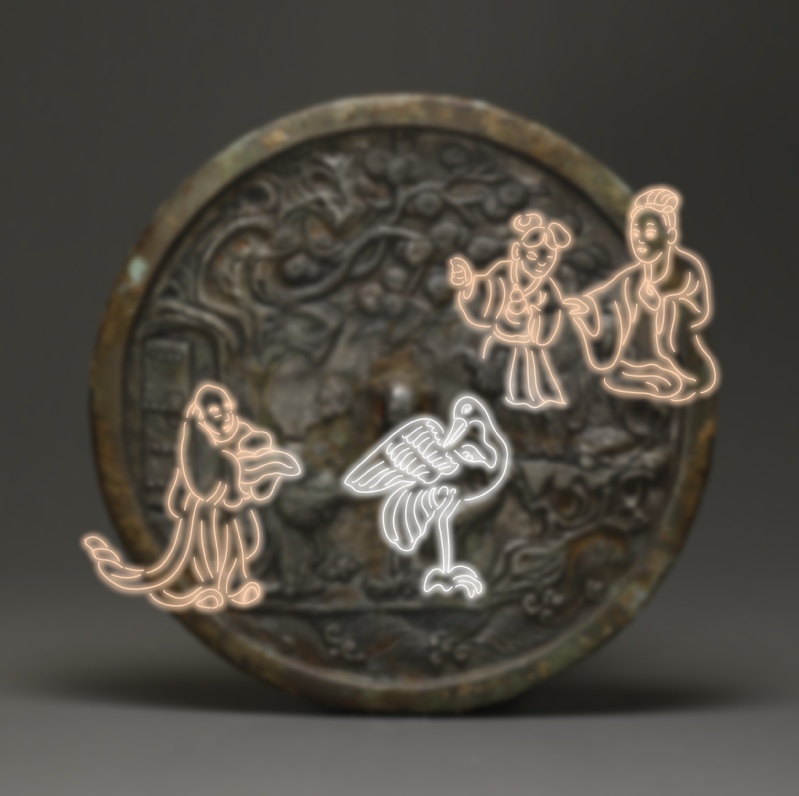
Dynasty: Jin Dynasty (1115 - 1234 AD)
The man on the left holds a tortoise in his arms, seeming to offer it as a gift to the god sitting on a cloud on the right. Tortoise, crane and pine tree, all symbols of longevity in Chinese culture, are engraved on the mirror. This mirror could be a nice gift in ancient times for seniors in the family.
Cloisonne-Enamel Mirror with Magpies
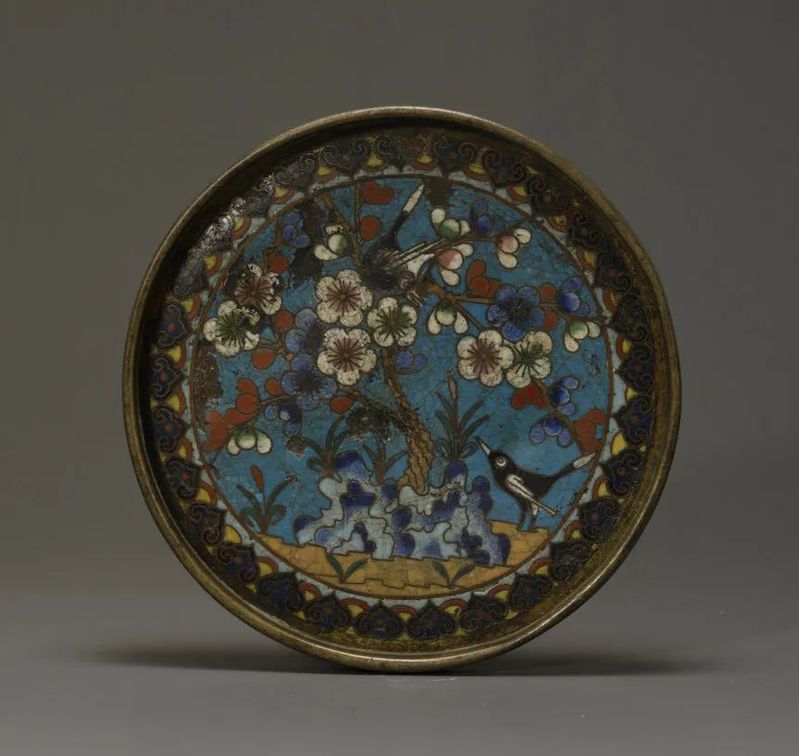
Dynasty: Ming Dynasty (1368 - 1644 AD) and Qing Dynasty (1636 - 1912 AD)
In stark contrast to other mirrors in the collection, this cloisonné enamel bronze mirror stands out with its bright colors. The mirror is decorated with two magpies and a blooming plum tree and encircled by clouds at the rim.
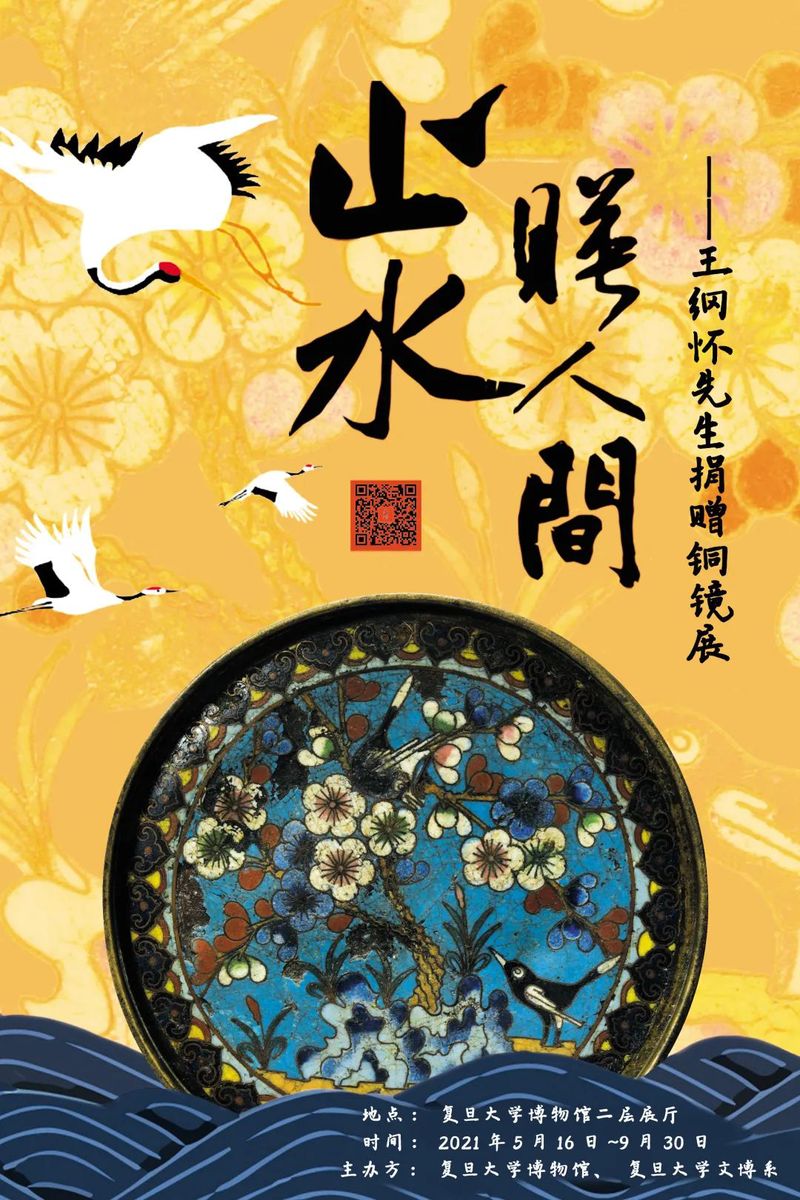
Venue: Floor 2, the Museum of Fudan University
Dates: May 16 - Sept. 30 (close on Mondays)
Opening hours: 9:00-11:30, 13:30-16:30
Please note: At this time the Museum of Fudan University is open only to current Fudan students, faculty, and staff.
THE MUSEUM OF FUDAN UNIVERSITY
The Museum of Fudan University also has a permanent exhibition on the first floor. Take a look while you are at the museum.
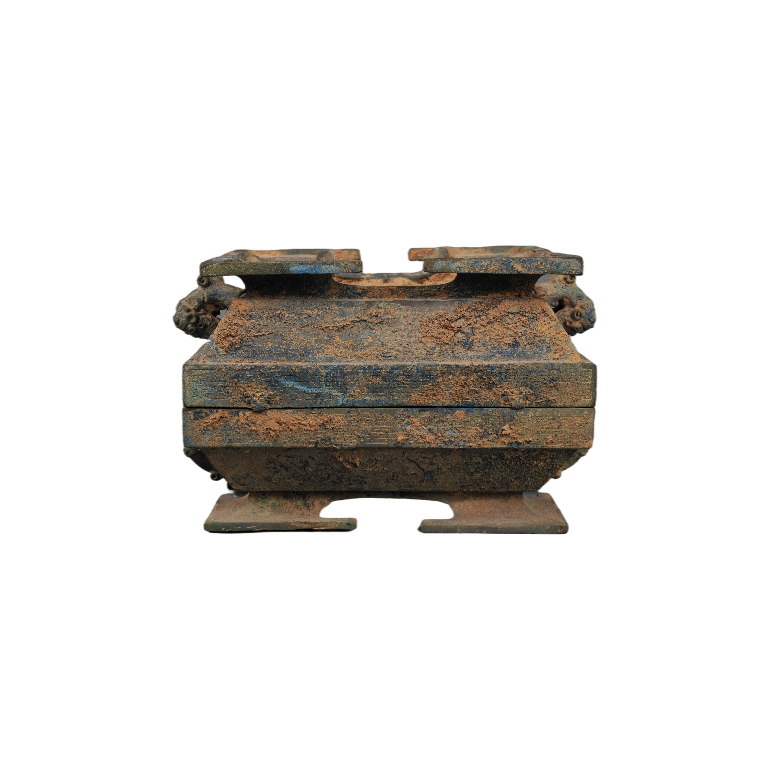
Located in the west of the tranquil and elegant campus, the Museum of Fudan University, a couple of two-story pseudo-classic buildings, originally boasted an exhibition area of 2,600 square meters or so. It was formally opened to the public on January 1, 1992 and now is home to more than 2,000 collections. Some are old collections of the university and those from Henan Museum and Luoyang Municipal Working Team of Cultural Relics allocated by National Cultural Heritage Administration; also included are donations from Shanghai Museum and other institutions. Here you can find art treasures of various categories including Chinese ancient porcelains, oracle bones, bronze objects, paintings and calligraphy, native artifacts of Gaoshan aborigines in Taiwan, etc.
Source: The Museum of Fudan University, Department of Cultural Heritage and Museology




